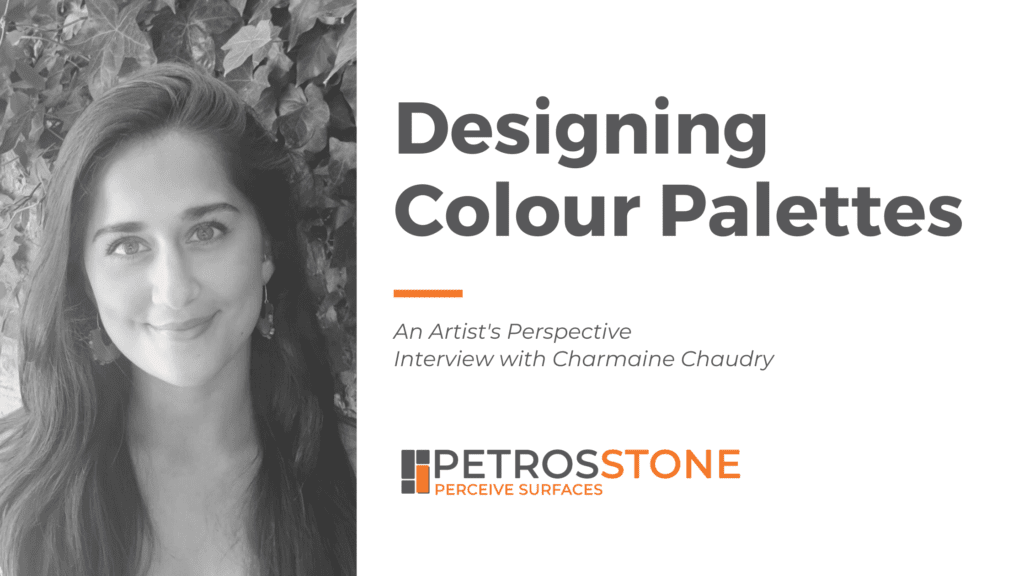This month, we at Petros Design had the pleasure to interview Charmaine to get an artist’s perspective about Interior Design. She is originally from the Midlands in the UK. She moved down to London for university. She studied French with Film Studies at King’s College, London. Charmaine has been a freelance artist throughout her university degree, producing everything from portraiture to landscapes to abstracts, and a variety of small commission pieces. When she left university, she really wanted to work in a trade that I could adapt to the actual world, so she enrolled in an Interior Design course at the KLC School of Design in London.
What does art mean to you?
I believe art and design are fundamentally about representing and creating beauty in all its forms. This is about communication. Communicating a concept, a feeling, atmosphere, political statement, and it is your job as the artist/designer to communicate in the most attractive and relatable way.
This, of course, is subjective, people relate to locations, colours, textures, and feelings totally differently, and so you can never capture or please everyone. I’m learning that you should always be yourself, even as you design for other people and with their goals in mind.
This is about communication. Communicating a concept, a feeling, atmosphere, political statement, and it is your job as the artist/designer to communicate in the most attractive and relatable way.
At a very macro level, what are some fundamental differences between Art and Interior Design?
Art, when I decide what to paint, is a freer discipline than design. In art, you have freedom over the subject you choose, the medium that you choose, as well as the technique you use. Being an artist, in essence, is to portray how you see reality. Perspective and subjectivity are vital in art, I would say. Whereas for interior design, you are constrained to some extent by the practicalities of your clients’ living demands.
This isn’t always true of art. If you do commissions, as I do, then working to a brief works the same way as it does in interior design.
However, art also has less pressure for immediate perfection, changing, re-shaping, re-doing can all happen at a much quicker pace and with minor financial repercussions. Laying a floor is significantly more expensive than re-shaping an eye on a portrait! Fundamentally, art is purely aesthetic and is there just to be looked at. Design is more experiential and you have to find a middle ground between practicality/liveability and beauty.
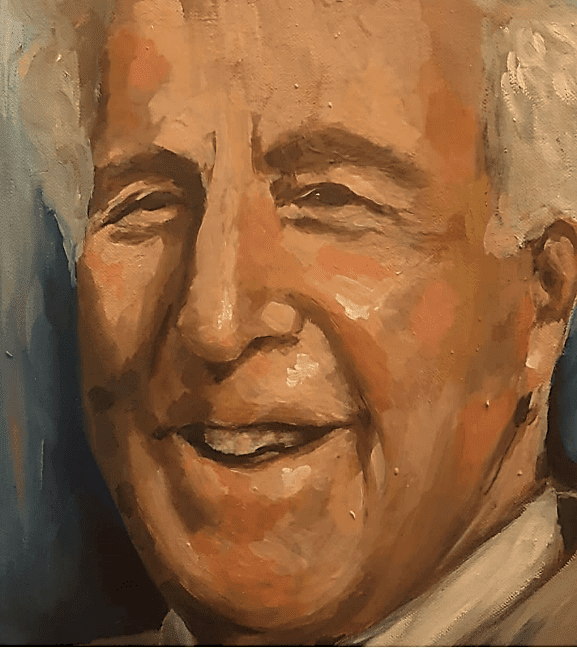
However, art also has less pressure for immediate perfection, changing, re-shaping, re-doing can all happen at a much quicker pace and with minor financial repercussions. Laying a floor is significantly more expensive than re-shaping an eye on a portrait! Fundamentally, art is purely aesthetic and is there just to be looked at. Design is more experiential and you have to find a middle ground between practicality/liveability and beauty.
Do you think having experience in Art has helped you get better at Interior Design?
To be an artist, you have to be bold and you have to try to grab the viewer’s attention. As a result, coming into interior design as an artist, gave me the skills and confidence in my ability to draw, to be bold in my design choices and to then communicate my ideas to others. I would definitely say that I feel most comfortable communicating my design ideas by drawing, something I feel very lucky to be able to do with confidence. The only drawback to this is that it may have made me occasionally bite off more than I could chew in going for over-ambitious designs with only a still-developing skillset!
Growing into interior design has also helped refine me as an artist. Before I studied interior design, my artwork was hardly ever planned, and never thought out stylistically, for example, I would hardly ever think about the composition of a painting and rely purely on how accurately I could express an image. Interior design is much more precise in an almost mathematical sense. Having to compose a room to someone else’s tastes rather than my own has forced me to value trade-offs in my art in terms of composition and colour that previously I might have simply ignored. I can now value how a piece of art is stylised and the methods artists and designers use in order to present their design in the most attractive way.
Coming into interior design as an artist, gave me the skills and confidence in my ability to draw, to be bold in my design choices and to then communicate my ideas to others. I would definitely say that I feel most comfortable communicating my design ideas by drawing, something I feel very lucky to be able to do with confidence.
In art, you have almost complete control over composition, colour and lighting. In design, this is rarely true. Did this turn out to be something you had trouble with?
Yes, this is definitely something I had trouble with. It is a cliché, but with art, you literally start with a blank canvas. If I want to travel to the Atlas Mountains in Morocco, or the Isle of Skye in Scotland, I can do that from either my imagination or photographs. In art you can paint whatever you want, however, you want. In interior design, the process starts and ends with the client’s desires. The original building, client’s desires, time management, budget are all things that are in some way prescribed to you and you need to satisfy the client’s needs pertaining to all these parameters.
When I do a piece of art, I can put it down if I need a break or start another project or if I can’t quite get the right shade or angle. There is no equivalent to this in interior design.
In a lot of ways, doing a portrait commission is like being an interior designer. Once again, you have a brief and you have to satisfy a client. It is slightly different in art though because there are always changes you can make quickly, cheaply and to please a client after you have presented them with a nominally finished project.
I struggled with this lack of control in a project to redesign a guest suite in the basement of a house, with no natural light. Initially, I found this process difficult, as I had an idea of what design I wanted to do to suit the brief, but not the natural geography of the room. In interior design, you must work with what you are given and do the best you can do.
If I want to travel to the Atlas Mountains in Morocco, or the Isle of Skye in Scotland, I can do that from either my imagination or photographs. In art you can paint whatever you want, however, you want. In interior design, the process starts and ends with the client’s desires. The original building, client’s desires, time management, budget are all things that are in some way prescribed to you and you need to satisfy the client’s needs pertaining to all these parameters.
Which medium better satisfies your creative urge? Fine Art or Interior Design?
Both are satisfying on different levels. Art is more accessible to me as I have a room in my house where I can just paint the moment I get a creative feeling.
For interiors, there is a tremendous amount of work that goes on behind the scenes and raises the stress levels. This involves coming up with a concept, a concept design, lighting design, project managing, logistics, improvising when inevitable problems arise. All of these have cost and emotional investment and really raise the stakes of a design. The critical thing that matters after that is, the client’s satisfaction with the design.
Selling paintings has a similar feeling. Everyone gets a kick when someone else thinks that their work is good enough to hang or that you are skilled enough to be commissioned. It is validation, but also something more than that. However, it is also much more self-contained and there is a joy in painting which does not have to have an end product as an interior design project does. That may just be a function of the expense of interior design – but the pressure really changes your relationship to it.
All of these have cost and emotional investment and really raise the stakes of a design. The critical thing that matters after that is, the client’s satisfaction with the design.
What is your design process like?
The first thing is getting a complete brief. You have to get to know your clients really quickly and really well – what clothes do they wear; what their home looks like; what is their daily routine; what are their practical concerns; what are their hobbies. In the beginning, think less about what colours they might like and instead try to gather what feeling they want from their home. Colour schemes and concepts can flow naturally from the people you meet and what you have learned from and about them. To be an excellent designer, one requires a lot of intuition and emotional intelligence. And if you get to know them well and judge them well, you should know what the client wants as well or even better than they do.
Build a concept – find what the client has described to you about their home and find images which create their feeling of what home is.
Once you have a concept down, look at their space, the floor-plan and plan out your work. Every home has a set of problems which as a designer you are trying to solve. Practical solutions are the most important part of this, but mixing practicality and beauty makes a good designer excellent.
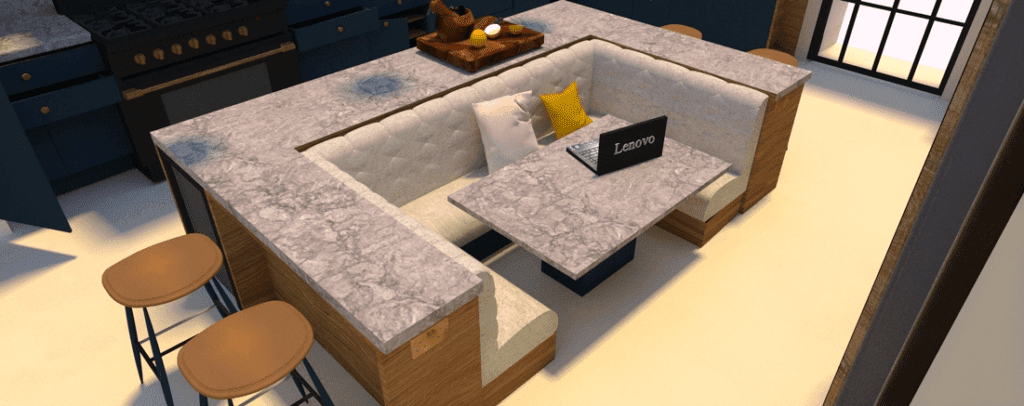
Getting more out of the current kitchen space is a common example and was an important aspect of my last project. The couple I was designing for had two young children and loved to have their home built around their kitchen, where they liked to cook and have friends over. I turned an island into banquette seating so I could preserve surface space for cooking while allowing the children to sit and do their homework from the table.
I used their empty hallway space and built into it, creating more kitchen utensil space and a second hidden pantry space which allowed them to hide away the inevitable mess created by children, allowing them to keep their beautiful kitchen space clean and clear. They really liked the design and it really suited what they need as a young family.
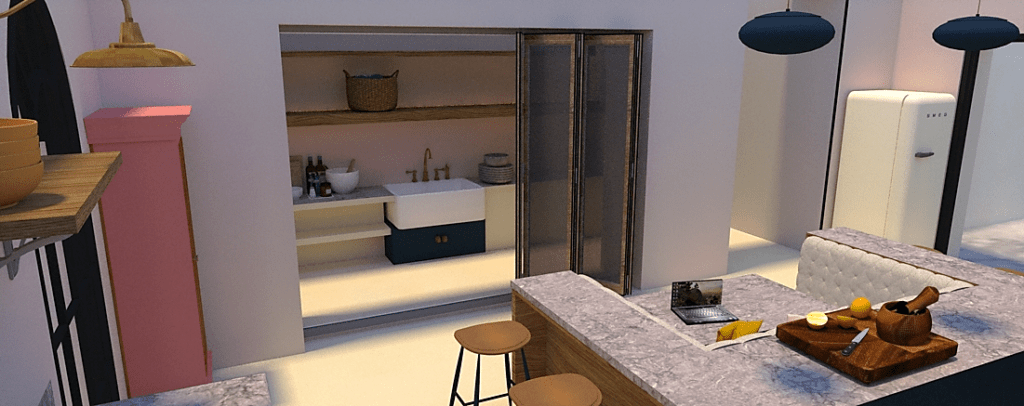
The couple I was designing for had two young children and loved to have their home built around their kitchen, where they liked to cook and have friends over. I turned an island into banquette seating so I could preserve surface space for cooking while allowing the children to sit and do their homework from the table.
How soon do you think about colour in a project?
Lots of designers have colour palettes and colour designs already in the bank and ready to use before they have even met the client. This can be useful for knowing which colours work well together in a scheme, limiting the chance of designs going wrong. However, if you rely on your own set ideas of what a good colour scheme is, you can limit how willing you are to interact with a client’s wants and desires from their home.
I try not to think about colours until I have met and really am getting to know the client. Getting a feeling from them about what they want and who they are allows you to get a taste of what kind of style they might like and certainly a good idea of what they won’t like!
Once I have got to know them and am arranging a concept, colour starts to become important as the tones of the colours you use will affect the feeling and atmosphere that your design will create. I take my colour scheme from my concept images and make sure to stick to it or else I keep going back and forth and my project won’t be able to progress.
If you solely rely on your own set ideas of what a good colour scheme is, you can limit how willing you are to interact with a client’s wants and desires from their home.
Could you think of some factors that play an important role when landing on a colour scheme for your design?
I often pull colours together through paintings and artwork, especially landscapes. I find that nature is a good inspiration and has more variety of colour than people realise. Nature has so many forms of beauty and it can provide endless inspiration. For example, I often find that there are more pinks and oranges in the sky than is often thought, particularly at dusk and dusky pink colours have now become a trendy colour. You can find interesting colour palettes which contrast grey buildings or roads with the pinks in the sky. You can see that this has really influenced some of my art.
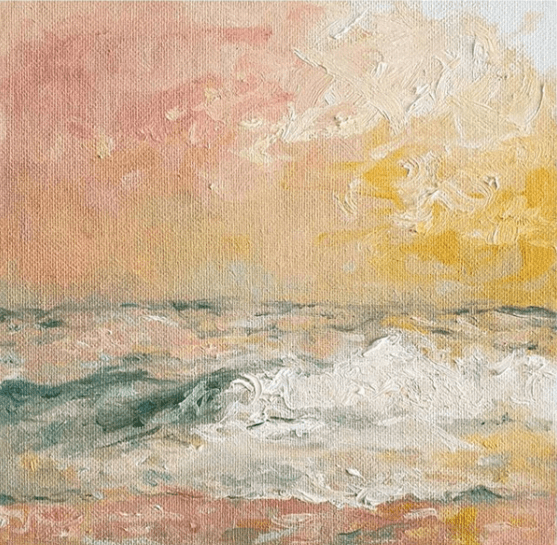
It also depends on your client. Some personalities are more into bold colours and complementary colour schemes, whereas other people like to have more harmonious and subtle colour schemes. It is also important to realise that colours intensify in actual rooms – it really isn’t like looking at a colour wheel. I usually pick a colour that I like and then go for one that is a couple of tones more muted than the one I liked on the wheel.
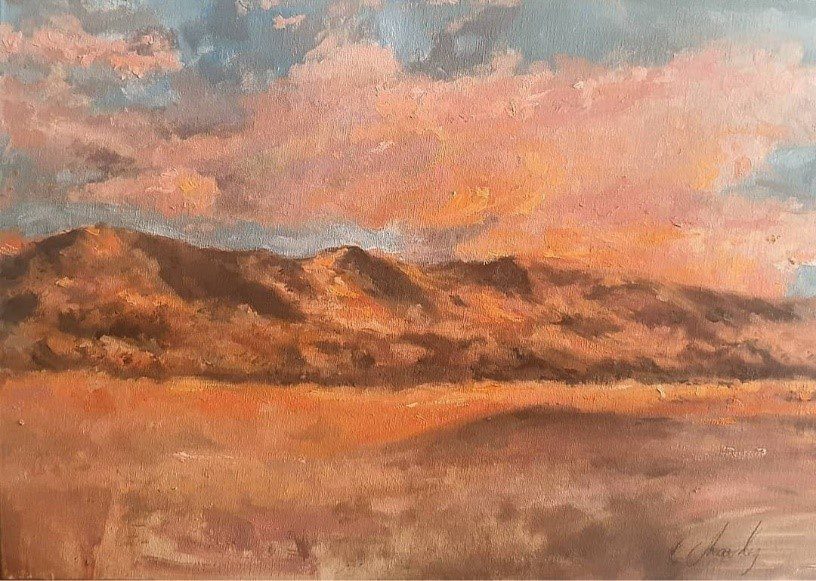
Lighting is the next enormous influence. For example, one of my recent projects was in Provence and the light there is much warmer and much purer than in the UK. As a result, subtle neutral colours were more fitting and were bolder than they would be in the grey UK. In my dark house though, I have gone for more vibrant, bolder colours to indfuse life where the natural light doesn’t do that already for me!
Some personalities are more into bold colours and complementary colour schemes, whereas other people like to have more harmonious and subtle colour schemes. It is also important to realise that colours intensify in actual rooms – it really isn’t like looking at a colour wheel. I usually pick a colour that I like and then go for one that is a couple of tones more muted than the one I liked on the wheel.
Charmaine, do you think that is designing material and colour palettes for interior design is any different from designing colour palettes for art?
They can be quite similar. For commissions and interior design, you are choosing colours that are attractive to your client or buyer, as well as choosing colours that express a certain feeling. In interior design this choice is a lot more thought out and much more than just an ephemeral feeling like in art.
Interior design has a lot more liveability concerns as well. A client might love bold reds but you probably don’t want to paint all the walls bright red. instead you might put in individual pieces for pops of red, whereas in art you can use statement colours because it grabs attention and the impact won’t fade with time.
This is because with art you are trying to capture attention and generate emotion. In art, it may be just as valid for someone to say that they hate a piece of work as much as saying they love it. Sometimes that is even the point. Damien Hirst and Tracy Emin have exploited this throughout their careers and have made a name out of being divisive and controversial. The equivalent divisiveness in interior design just isn’t an option because most of the time you have an audience of the client and they simply have to like your design.
In art, it may be just as valid for someone to say that they hate a piece of work as much as saying they love it. Sometimes that is even the point. Damien Hirst and Tracy Emin have exploited this throughout their careers and have made a name out of being divisive and controversial. The equivalent divisiveness in interior design just isn’t an option because most of the time you have an audience of the client and they simply have to like your design.
Do you think it is important for every designer to learn about colour theory?
Colour theory is a good thing to know about but I’m not sure whether it is essential. I think most designers develop an intuition for colours over time but it isn’t always immediately obvious and guidance can be useful.
Colour theory is a good rule of thumb and can provide options if you are struggling to find the right colour for a room or a space. In that way, it can be very helpful. It’s also always important to learn the “rules” before you inevitably bend or break them!
I wouldn’t want to base my choices entirely on colour theory as it can make you rigid in your way of thinking. Colour preferences are often subjective and sometimes you need to take a risk and be bold.
Even if you do know colour theory, it is the balancing of colours and softening or intensifying of them through fabrics and textures that can really make a room go from drab to gorgeous and on that level, colour theory can only get you so far!
It’s also always important to learn the “rules” before you inevitably bend or break them!
What are some resources, to get better at designing colour palettes, that you can recommend?
I have heard that Adobe Captureis quite a useful tool – all you have to do is take an image and it will automatically create a colour palette for you. I haven’t used it myself but I know a few designers who do and they love it.
Art is also a good way to create a colour palette. Look for artists/paintings that stand out to you and you can use their work as a base for a palette. There is a reason a lot of art is attractive, perhaps they have used a complementary colour scheme that captures your attention. For me Monet’s landscapes are a wonderful tool to inspire colour palettes. I am attracted to the harmonious soft blues, lilacs and blush pinks; this colour palette is gentle, balanced and soothing, and for me, it creates an atmosphere that pauses time.
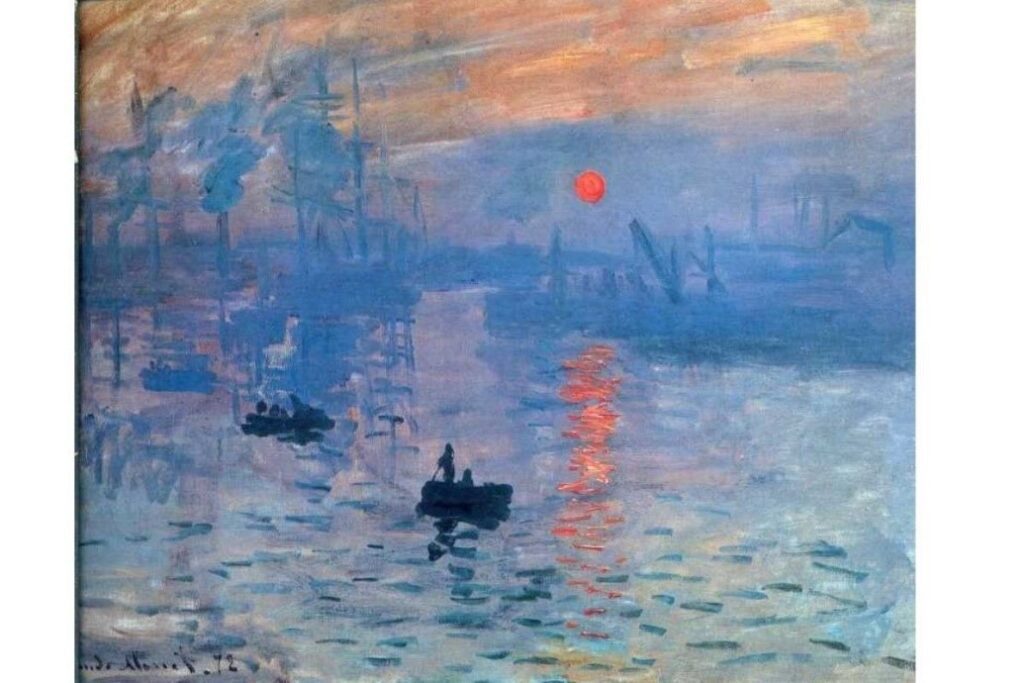
Magazines also work for this – cooking, and fashion magazines will get your eyes into working out what colours do actually go well together. Rip out random bits of magazine, identify the colours that are in the image, and pick out your colour swatches to match up the colours to create a scheme.
Being from London, how has the culture impacted you as an artist and a designer?
London is an amazing resource. It is an amazing place for design – so many of the world’s greatest artists, museums and houses are right on your doorstep. For example, Leyton House and the Sir John Soane Museums are two of the most beautiful and interesting interiors in the world and they are both in central London. There are also smaller art galleries, for example, the Whitechapel Art Gallery is just down the road from me, so anywhere you are around London, you almost always access art and design.
I am obviously fortunate to have all these amazing things so close and try to take advantage of them as much as I can. However, I am also very much a countryside person. Living in London, the busyness can often leave you craving peace and tranquillity. Sometimes you can get overawed with all the different sources of information, and that can leave you missing a sense of your own style when everyone else’s is so amazing, and you could spend a lifetime just learning to copy it. Going to the country can help me clear my head and think more clearly, as well as getting inspiration from nature. I suppose London has created this urge in me to escape to tranquillity and nature and I am very lucky to be able to access both. There is definitely a balance between being inspired and stimulated, whilst having the peace and space to be able to find your own creative path.
Who have been the most influential people in your artistic journey so far?
I’m sorry for the very cliched answer; Having a good family and friends. I wasn’t incredibly academic growing up and ever since I was young I remember drawing more than I would write. I have two elder sisters who have always pushed me to pursue my creative passions and have been brilliant in keeping me going whenever I start to feel like things aren’t going my way.
My parents have also been fantastic examples. My Mum was an architectural technician, and if I have any talent, it is from her! My Dad is a steely man who has taught me to be strong and to always get up and keep going if you believe in something enough. I suppose this lucky combination of support, creative freedom, and having examples of success have no doubt, helped me in my journey so far.
Art can be a career which leads you to be around people who take themselves quite seriously. I have a well-grounded bunch of friends that I have known since I was a kid. This has also helped me greatly and taught me never to be too over the top and to always be myself.
Studying at the KLC School of Design has also been amazing. It has reminded me of how much talent is actually out there. Every single person on my course was as good as if not better than I am, and it has taught me to embrace doing things collaboratively and being my woman. Talent is one thing, and there is so much of it in the world, but it is knowing other like-minded people and influencing each other is equally important.
The course itself was great and taught me about new styles and exposed me to new thought processes and people that I had never known about before. That has also been a good starting point for me into the interior design world!
Where can people learn more about you or get in touch with you?
I run two Instagram accounts: @charmainechaudrydesigns where I post my artwork and interior design inspiration.
I am also an illustrator and have recently set up a page for illustrations @ccillustrate. I have a new website at www.charmainechaudrydesigns.com where you can see my work and items for sale. If anyone wants to get in touch, you can email me at charmainechaudrydesigns@outlook.com
The Entire Petrosstone Team thanks Charmaine for making this happen. It was a pleasure to peek into her mind. We hope you learnt something from this interview.


